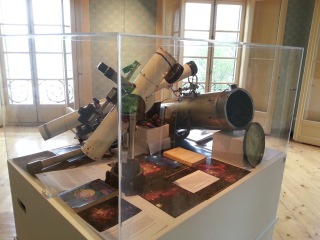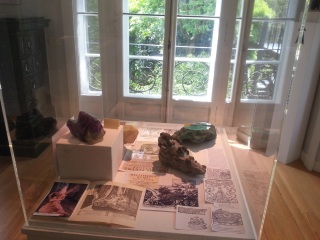Blog di Luigi Alfonso Viazzo aggiornato e completo @
http://luigialfonsoviazzo.altervista.org
Mercurio era, per gli antichi Romani, il messaggero degli Dei; questa sua peculiarità era dovuta al veloce spostamento apparente in cielo del pianeta, a lui dedicato, a sua volta derivato dalla vicinanza dello stesso al Sole (di qui la sua veloce rivoluzione intorno al nostro astro del giorno).
English version
Mercury (Mercurius) was, for the ancient Romans, the messenger of the Gods; this peculiarity was due to the fast moving apparent in the sky of the planet, dedicated to him, in turn derived from the proximity of the same to the Sun (hence its rapid revolution around our star of the day).
Despite the “shadow” cast (at the turn of the nineteenth and twentieth centuries) on his record, from the presumed presence of Vulcan, Mercury (in the mythology of the Urbe – Rome – son of Jupiter and the nymph Maia) is the planet closest to the Sun of our Solar System.
And, certainly not casually, Messenger is the name of the mission of NASA (US Space Agency), designed to study the characteristics and the environment of the planet. The name of the probe derives from the acronym MErcury Surface, Space ENvironment, GEochemistry and Ranging (in practice “Study of the geochemistry of the surface and of the atmosphere of – or space around – Mercury”). And the Yankees (not only in the field of science) have, it is worth mentioning, a real passion for acronyms …
Launched on 3 August 2004, the probe on 18 March 2011 entered the planet with a double thermal identity: it can in fact go from 350 ° C (in illuminated areas) to -170 ° C (shaded areas): phenomenon caused by almost total absence of atmosphere.
The mission, which lasted until the impact on the ground in 2015, marked the return of a mechanical eye near Mercury, 35 years after the flyby of the Mariner 10 probe (dated 1975).
Il video di Messenger, pochi giorni allo schianto su Mercurio…
Traduzione in latinorun per gioco (by Google Translator)
Mercurius enim veteres nuntius deorum Apparet hoc jejunium praesentium mutationem telluris deberi caelo dicata rursus ex eadem vicinia Solis (unde et ieiunium diei revolutionis Stella).
Quamvis umbra ergo iniecit uxor (de vertente saeculo XIX et XX) in record ejus, asserta coram Volcanum Mercurium (In mythologia Urbis, filius Iovis et Maiae nymphae) est planeta propius ad solis Mundo nostro solari.
Atque certe hoc forte non est missio NASA angelus nominatur (US spatium intermedium), et disposito studere habet globalem naturam. Et Messenger, nuntius, nomen sonda est.
Immissa in Augusto III, MMIV, Martii XVIII, MMXI maxime ferat ingressus orbita circa planetae in genere sciri scelerisque identitatem, possit exire de CCCL ° C (in elucidat) ad -170 ° C (adumbratus areas) rei causa est prope immaterialitas urna.
Missio, cuius impulsum usque ad terminum pugnatum in terra in MMXV, notatum est reditus de oculo circa mechanicas Mercurium: XXXV Nabu X annis post immissionem autem demitti specillum (datas MCMLXXV).

Ô spescimetrô ô l’ è un strümentô de mezüa in graddô de mezüä i spessôi…

Spunto in Piemontese by Wikipedia
Ël Journal d’Analyse Mathématique…
Photo by Luigi Viazzo with Samsung Galaxy S3



























